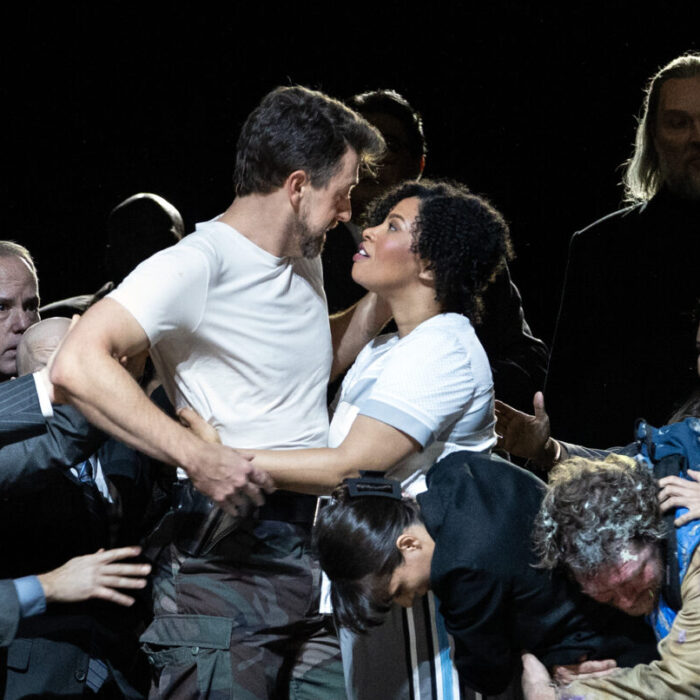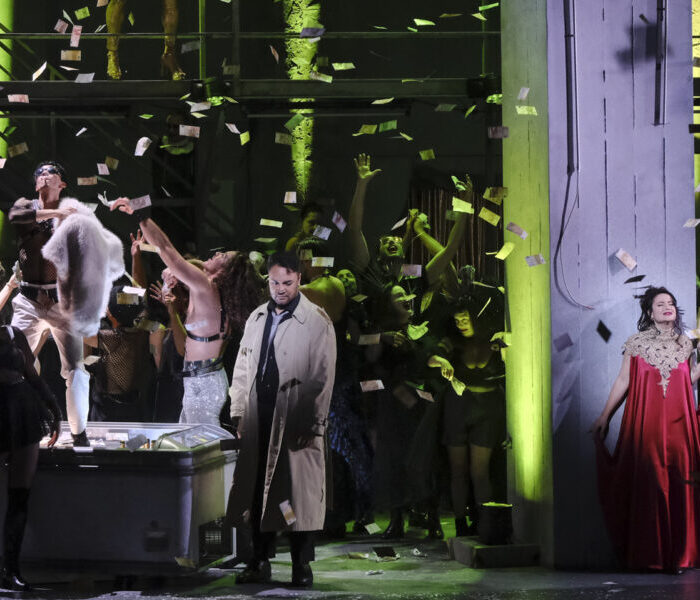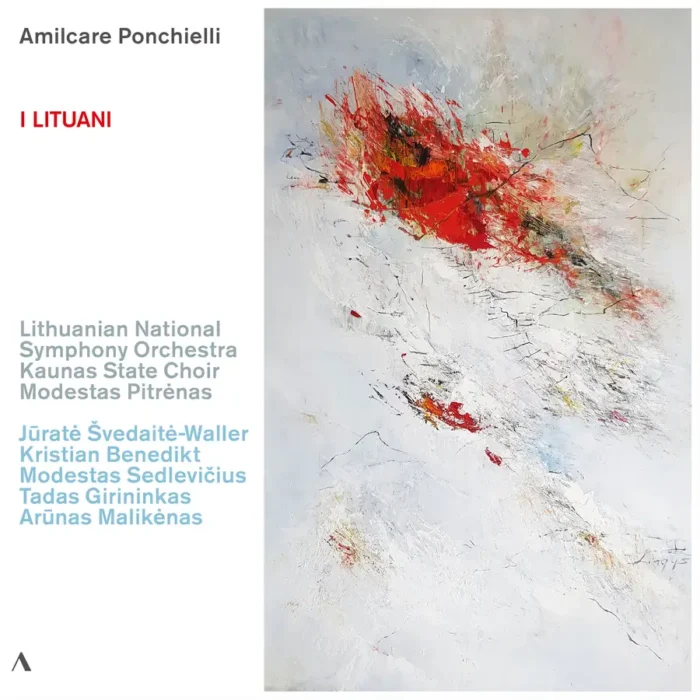
The Haydneum Eszterháza Festival 2023 Review: L’Infedeltà Delusa
A Standout Performance From Smith in a Haydn Rarity
By Alan Neilson(Photo: ©Haydneum / Pilvax Films)
In 1766, Prince Nikolaus Esterházy, whose preference was to live away from the imperial court, began the construction of the Esterháza palace. It was situated in an isolated swamp land in western Hungary, near the Neusiedlersee. Designed by Johann Ferdinand Mödlhammer and Melchior Hefele at a cost of over 13 million gulden, it was to become one of the finest examples of rococo buildings in the country. It also boasted many architectural delights, including an opera house, which unfortunately burned down in 1779, and a marionette theatre. The opera house was used for drama and opera and saw the performances of many of Haydn’s operas, which is not really a surprise given that the composer was the Prince’s kapellmeister and lived on the estate. In 1773, the Empress of the Austro-Hungarian Empire Maria Theresa visited the palace and was entertained by, among other things, a performance of the composer’s opera “L’infedeltà delusa,” which later gave rise to her remark, “If I want to hear good opera, I go to Esterháza.”
In this, the first edition of the Haydneum Eszterháza Festival, the Haydneum decided to celebrate the 250th anniversary of Maria Theresa’s visit with a series of concerts over a six day period. Fittingly, it opened with a concert performance of “L’infedeltà delusa” on September 1, exactly the same date as that attended by the Empress two and a half centuries earlier. The performance took place in a splendid hall, decorated in light shades of pink and blue on a white background with ornate golden trimmings that looked out over the extensive gardens. A picture of Apollo in his chariot dominated the ceiling, from which a large chandelier hung. The orchestra and singers were positioned in front of the windows. The distinguished audience, which included the Prince and Princess of Esterházy and the Hungarian Minister for Culture, was limited to a small gathering of approximately 150 people.
“L’infedeletà delusa,” set to a libretto by Marco Coltellini, is widely considered to be the best of Haydn’s comic operas, in which the wily Vespina, using her trickery and a variety of disguises, thwarts Filippo’s attempts to marry his daughter Sandrina to the rich farmer, Nencio. Not only does this allow Sandrina to marry Vespina’s brother Nanni, the man she loves, but it also ensures Vespina is able to marry Nencio.
Of course, a comic opera only works as a concert performance if the singers, unable to rely on props and physical gags, have the necessary skills to carry the comedy in the voice as well as the necessary presence to assert their characters through gestures and facial expressions. And, overall, the cast proved themselves successful in this regard. The audience may have only laughed out loud on rare occasions, but there was a lightness about the presentation that kept it amusing throughout the performance.
Strong Cast Led By Smith
Everything revolves around the character of Vespina. She is responsible for moving the action forward with her plotting as well as the comic episodes in which she is always involved. Soprano Ella Smith‘s natural vivacity and air of spontaneity brought the character of Vespina convincingly to life. She possesses a fresh, bright, breezy voice with an engaging upper register, which she used imaginatively and sensitively. Her recitatives were animated and clearly moulded, while her arias were expressive and adorned with graceful embellishments. During the second act, she donned numerous disguises, which she successfully defined through her voice. A memorable moment happened in the aria “Ho un tumore in un ginocchio,” in which Smith pretends to be an old woman weighed down by ailments. She coughed and wailed through her lines while mimicking the voice of an old woman. On the other hand, her final aria, “Ho tesa la rete,” was particularly successful in showing off the beauty of her voice, in which she elegantly embellished the vocal line, including short, light, delicate passages of coloratura to open it up beautifully. She allowed her upper register to bloom in what was an overall lyrically strong presentation.
Baritone Szilveszter Szélpál produced a strong performance in the role of Nanni. His dark, distinctive, attractive timbre and carefully crafted phrasing gave his extensive recitatives an appealing, expressive quality, which he supported with appropriate facial expressions. Although he had only a single aria to sing, he made the most of it by showing off his ability to characterize the voice. He was also attentive to other singers, most notably Vespina in their duet, “Non v’è rimedio,” in which they displayed a sympathetic connection in supporting each other’s anger and frustrations.
Soprano Adriána Kalafszky sang with a genuine sense of enjoyment and caught the attention of the audience with her beautiful performance as Sandrina. She possesses a secure, versatile voice with pleasing shades of color, which she employed sensitively and intelligently to develop her character. Her final aria, “È la pompa un grand’imbroglio,” proved to be one of the highlights of the evening, in which she showed off the beautiful lyricism of her voice, crafting the vocal line with subtle changes in coloring, intricate embellishments and passages of delicate coloratura.
Tenor Bernhard Berchtold did a fine job bringing the character of Filippo to life. Not only was he physically animated in promoting the meaning of the text through the use of light-hearted, exaggerated gestures, but he was also very focused on conveying its meaning through his singing. He used varied emphases, inflections and changes in intonation to create the appropriate impression. His recitatives were very lively, and his arias expertly captured the spirit of the words.
Tenor Zoltán Megyesi produced a solid performance in the role of Nencio, in which he successfully gave voice to his emotions in response to being on the receiving end of Vespina’s plotting. His singing was passionate and technically correct, but on occasions he seemed to be unaware of the intimacy of his surroundings and allowed the volume of his voice to rise freely, overpowering the sensitive sound of the orchestra and producing a musical imbalance. For the ensembles, however, he seemed to be cognizant of the other singers and reined in the volume so that they were successfully presented with a pleasing balance.
A Vibrant Reading Compromised by Poor Acoustics
Although one could not have wished for a more visually elegant, tasteful and aesthetically suitable room for a concert performance of an opera from the second half of the 18th century, its acoustics were not the best. This compromised the quality of sound by dampening the sharpness and definition of the music. The musical director, György Vashegyi, nevertheless managed to elicit a pleasing performance from the Orfeo Orchestra, which produced an energetic and rhythmically vibrant reading that moved along at a lively pace. They captured the melodic strength of the work. However, whereas he created a nice balance within the orchestra, less attention was given to the balance between the orchestra and the singers, who, once or twice, appeared to be in competition with the orchestra, which occasionally played too loudly.
Overall, however, this was a delightful performance with some excellent performances from the singers in what was a splendid venue, despite its imperfect acoustics.



